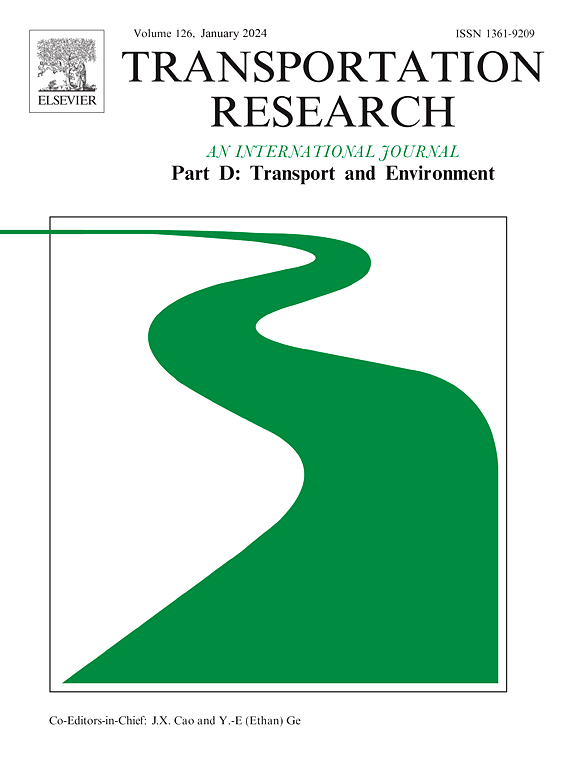探索建筑环境对电动自行车的影响:来自荷兰的纵向证据
IF 7.3
1区 工程技术
Q1 ENVIRONMENTAL STUDIES
Transportation Research Part D-transport and Environment
Pub Date : 2025-02-18
DOI:10.1016/j.trd.2025.104643
引用次数: 0
摘要
随着长期电动自行车数据的出现,跟踪电动自行车出行行为的快速演变及其与建筑环境的关系已成为可能。这是一项必要而及时的调查,旨在刺激电动自行车的使用。本文采用纵向结构方程模型(SEM),在控制社会人口因素和态度的情况下,分析了建成环境与电动自行车拥有量以及电动自行车出行频率之间的长期关系。研究结果表明,从2015年到2021年,电动自行车的拥有量和使用频率都有所上升。在不同的社会人口群体中,电动自行车正被更广泛地采用。居住在具有高潜在可达性和高地址密度的地区,会导致更高的电动自行车拥有量和更高的出行频率。建议未来的城市和交通政策利用电动自行车的增长趋势,并考虑电动自行车用户的居住偏好,以促进可持续的交通。本文章由计算机程序翻译,如有差异,请以英文原文为准。
Exploring the built environment’s impact on E-bikes: Longitudinal evidence from the Netherlands
As long-term e-bike data emerges, it has become possible to track the rapid evolution of e-bike travel behavior and its relationship with the built environment over time. This is an essential and timely investigation for policies aimed at stimulating e-bike use. This paper utilizes longitudinal structural equation modeling (SEM) to analyze the long-term relationship between the built environment and e-bike ownership as well as e-bike travel frequency, while controlling for socio-demographic factors and attitudes. The results indicate a rise in e-bike ownership and more frequent e-bike usage from 2015 to 2021. E-bikes are being adopted more widely across diverse socio-demographic groups. Living in areas with high potential accessibility and high address density leads to higher e-bike ownership and increased travel frequency. Future urban and transport policies are recommended to leverage the growing trend of e-bikes and consider the residential preferences of e-bike users to promote sustainable mobility.
求助全文
通过发布文献求助,成功后即可免费获取论文全文。
去求助
来源期刊
CiteScore
14.40
自引率
9.20%
发文量
314
审稿时长
39 days
期刊介绍:
Transportation Research Part D: Transport and Environment focuses on original research exploring the environmental impacts of transportation, policy responses to these impacts, and their implications for transportation system design, planning, and management. The journal comprehensively covers the interaction between transportation and the environment, ranging from local effects on specific geographical areas to global implications such as natural resource depletion and atmospheric pollution.
We welcome research papers across all transportation modes, including maritime, air, and land transportation, assessing their environmental impacts broadly. Papers addressing both mobile aspects and transportation infrastructure are considered. The journal prioritizes empirical findings and policy responses of regulatory, planning, technical, or fiscal nature. Articles are policy-driven, accessible, and applicable to readers from diverse disciplines, emphasizing relevance and practicality. We encourage interdisciplinary submissions and welcome contributions from economically developing and advanced countries alike, reflecting our international orientation.

 求助内容:
求助内容: 应助结果提醒方式:
应助结果提醒方式:


